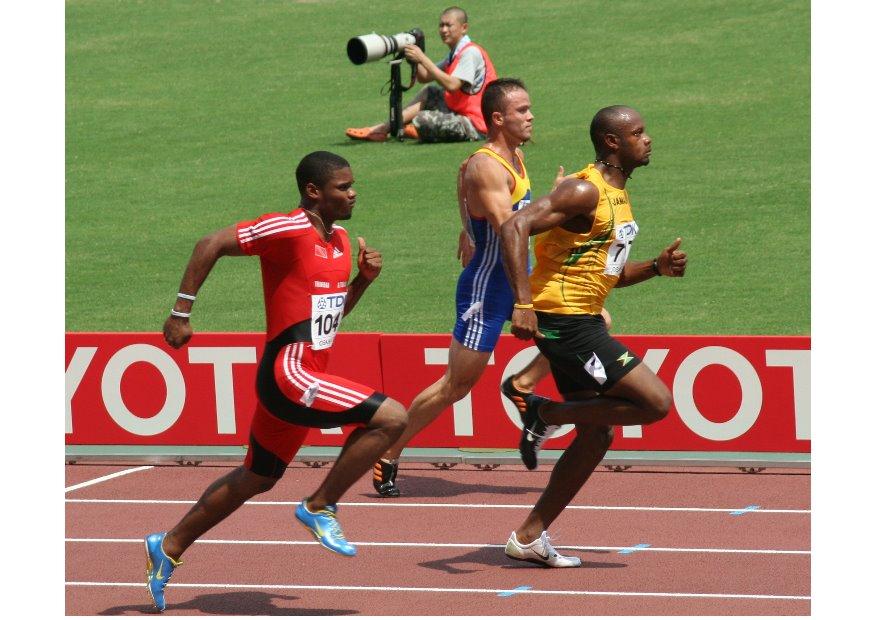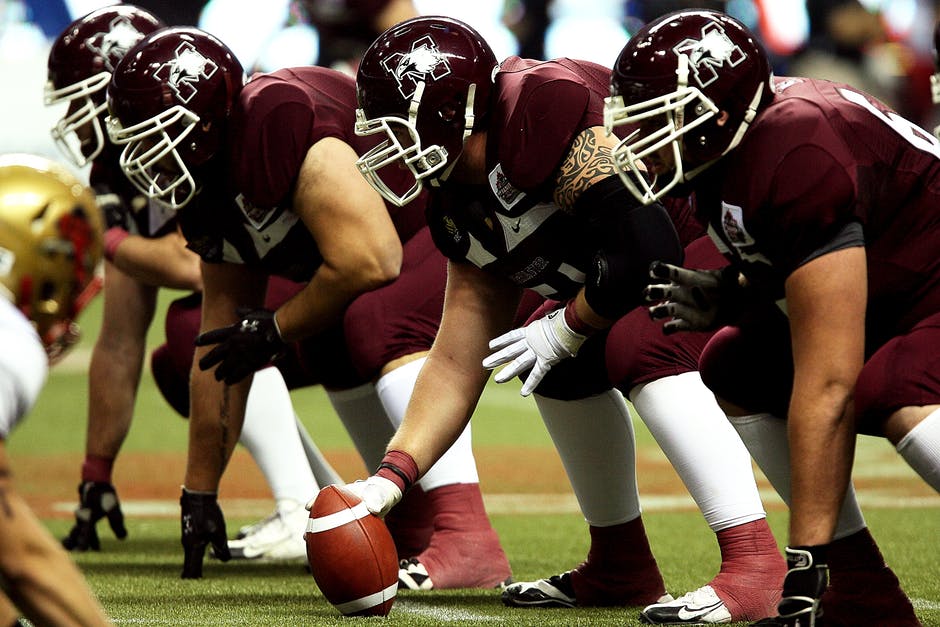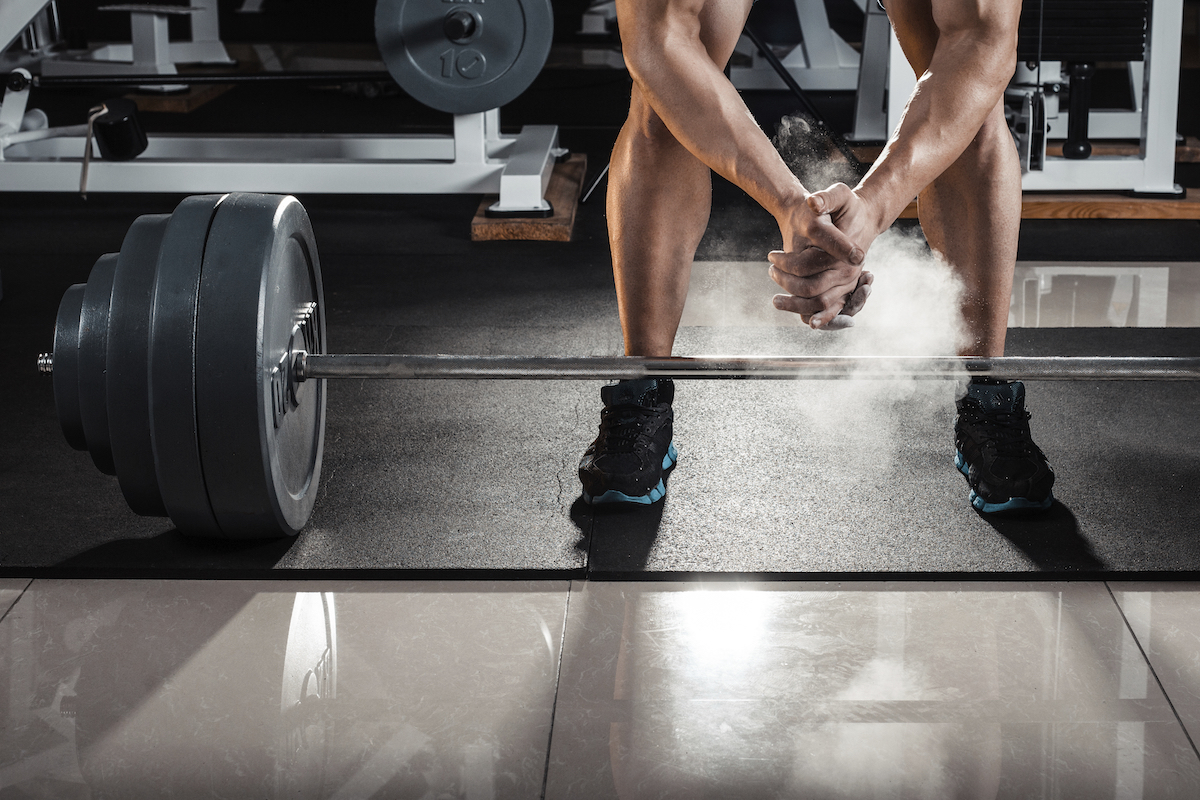There are a lot of posts on how to enhance an athlete’s ability to sprint quickly. This takes a combination of speed, plyometric, and strength training. This post is going to present some suggestions on what and how to incorporate these into a program to enhance an athlete’s ability to sprint quickly.
To begin, some things are going to be very important for being able to sprint quickly:
- An ability to move the limbs quickly. The faster you can move your limbs, the faster you can arrive somewhere.
- Explosive start, sometimes also known as an explosive first step. If you can get a fraction of a second on an opponent, sometimes that is enough.
- Ability to accelerate. The faster you can increase your velocity, the more likely you are to beat an opponent and make the play.
- Ability to exert force against the ground. This is important because it pushes and pulls you along when you sprint.
- High maximum velocity. The greater your top-end speed, the faster you can run.
- Ability to maintain that maximum velocity. The athlete that slows down the least has a huge advantage sometimes.
- Hamstrings that are strong in the lengthened position. This is critical both to running fast and to preventing hamstring injuries.
- Lower limbs that can withstand the training and the sprinting. A lot of athletes end up with shin splints and stress fractures from aggressive sprinting programs, this is important for your longevity.
With the above in mind, it’s important to realize that strength training does some things really well and some things really badly. Let’s begin by addressing what strength training does well:
- It improves your ability to exert force. For sprinting, the best exercises for this are variations of the squat and hip extension exercises. Squats because they are all about pushing against the ground using the legs. Hip extensions because this motion is what drives the foot towards the ground and pulls the body along during sprinting.
- It can teach the application of force, aiding with the explosive start and limb speed. This is done via the Olympic lifts and plyometrics that teach the athlete to exert a large amount of force, quickly.
- It does a great job training the hamstrings in the lengthened position, if the correct exercises are performed. For sprinting, you want to focus on exercises involving hip extension. Things like Romanian deadlifts, good mornings, back raises, reverse hyperextensions, stability ball/suspension training hip exercises, that sort of thing. In general stay away from the knee flexion (i.e. leg curl) exercises as they are going to be counter-productive to these aims.
For sprinting athletes, strength training does an okay job of addressing the lower limbs and injury potential. Many exercises can strengthen this area. However, the best exercises for this are going to be done on the track or on the grass.
Strength training does some things badly for improving sprinting performance:
- It may teach fast force application, but it does a terrible job teaching an athlete to move his or her limbs quickly in the sprinting motion.
- It does not directly develop the ability to accelerate, though in some highly-trained athletes there is a relationship between maximal strength and the ability to accelerate. It seems like this relationship only exists for more highly trained athletes and not beginners.
- It does not directly develop maximum velocity.
- It does not help with speed endurance, which is an event-specific skill.
- In terms of lower limb injuries, track and grass exercises are going to be more effective at prevention.
Taking all this into account, if we are putting together a strength training program to help improve an athlete’s sprinting ability, we need to focus on getting stronger, learning to apply that strength quickly, applying that strength in the horizontal direction, and addressing the hamstrings in the lengthened position. The rest of this article will present two sample workout programs for a sprinting athlete. Our hypothetical example is for a typical non-track and field team sport athlete, so we’ll go ahead and include the speed work in with the workouts to show how it all fits together.
| Day One | Day Two | Day Three | Day Four | Day Five | |
| Speed Training | Mobility drills, 5-10 minutesTechnique drills, 10-15 minutes
5-20 meter sprints, 5-10x |
Off | Mobility drills, 5-10 minutesTechnique drills, 10-15 minutes
20-60 meter sprints, 5-10x |
Off | Mobility drills, 5-10 minutesTechnique drills, 10-15 minutes
100-150 meter sprints, 3-5x |
| Plyometrics | Standing long jump, 5-10xHurdle hops, 3×5-10 yards | Box jumps, 3×5-10 | Bounds, 3×10-20 meters | ||
| Strength Training | Back Squats, 3-5×4-8×80-90%Lunges, 3×4-8 each leg
Romanian deadlifts, 3-5×4-8 Back raises, 3×12-15 Calves, 3×15-20 |
Upper body | Power clean, 3×3-6×60-70%Push jerk, 3-6×60-70%
Clean pulls, 3-6×60-70% |
Upper body | Front squats, 3-5×4-8×70-80%Split squats, 3×8-12 each leg
Good mornings, 3×12-15 Reverse hypers, 3×15-20 Calves, 3×15-20 |
The table above shows a sample five-day-a-week program for a beginning athlete. First, the idea is to stress the lower body and then give it a day off. This is why the plyos, sprints, and weights for the lower body are done on the same day. Day one is an acceleration day, combined with short distance plyos and heavy strength training. Day three is a maximum velocity day, combined with box jumps and with power training in the weight room. The last day is a speed endurance day, higher volume plyometrics, and higher volume in the weight room.
Below is a workout program for a more advanced athlete. The workout is structured the same as in the beginning program, but there are some subtle differences. First, there’s more variety in the speed training that includes an emphasis breaking down sprinting and working on parts. For example, stride frequency drills, stride length drills, resisted 5 meter sprints to work on the explosive start, etc. Second, the strength training is more advanced. Eccentric and pause lifts are included to work on strength and maintaining posture while sprinting. Split- and one-legged lifts are included to work on exerting force with one leg at a time. Clearly this is a training program that an athlete is going to work up to over the years.
| Day One | Day Two | Day Three | Day Four | Day Five | |
| Speed Training | Mobility drills, 5-10 minutesTechnique drills, 10-15 minutes
Stride frequency drills, 3-5×20 meters Stride length drills, 3-5×5 meters Resisted starts, 3-5×5 meters 10-20 meter sprints, 3-5x |
Off | Mobility drills, 5-10 minutesTechnique drills, 10-15 minutes
Stride length drills, 3×40-60 meters 40-80 meter sprints, 3-5x |
Off | Mobility drills, 5-10 minutesTechnique drills, 10-15 minutes
200-350 meter sprints, 3-5x |
| Plyometrics | Standing long jump, 5-10xHurdle hops, 3×5-10 yards | Box jumps, 3×5-10 | Bounds, 3×20-40 meters | ||
| Strength Training | Pause back squats, 3-5×3-6×70-80%Lunges, 3×4-8 each leg
Eccentric Romanian deadlifts, 3-5×3-6 One-legged back raises, 3×8-12 each leg Calves, 3×15-20 |
Upper body | Split clean, 3×3-6×60-70% each legSplit jerk, 3-6×60-70% each leg
Clean pulls, 3-6×60-70% |
Upper body | Front squats, 3×4-8×70-80%Split squats, 3×8-12 each leg
One-leg Romanian deadlifts, 3×8-12 each leg Reverse hypers, 3×15-20 Calves, 3×15-20 |




